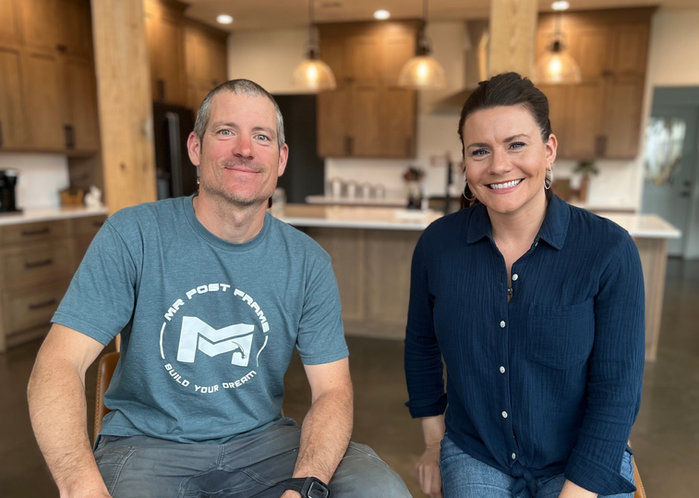Radiant Heat Install Pt 1/5 | Manifolds | MAD County Build
- MR Post Frame
- Feb 23, 2024
- 2 min read
In this post, we're diving into the world of radiant heat, specifically, everything above ground. This will be part of a series of posts, with the first installment focusing on installing your manifold.

Let's begin by discussing the manifolds I'm using. They're one-inch stainless steel manifolds equipped with balancers on the return manifold, flow meters on the supply manifold, ball valves, and temperature gauges. They are robust and versatile. In my setup, I have four zones, and I'll show you how to work with them.
Before we proceed, if you're interested in what's happening below ground, we have a playlist dedicated to that. We've recently been using Hitz Halter insulation below grade, which is a fantastic all-in-one solution with a built-in vapor barrier, Termino side, and a 6-inch grid for laying out your in-floor heat tubing.

Let's move on to the installation of everything above ground when it comes to radiant heat. The first step is to get the manifolds installed. I'll guide you through the process of cutting and mounting the pipes. As you can see, we have four zones, and we've tied them together from the concrete pour for pressure testing. If you need to repair anything in the future, it's a good idea to leave enough exposed pipe.
Now, let's mark our supply and return lines and ensure that our manifold remains level. We're using multi-directional manifolds, making the installation more flexible. After mounting, we'll attach the pipes, which is a straightforward process.
Next, we need to secure isolation valves and make sure we don't over tighten them since the system operates at low pressure.

Moving on to connecting the manifold to your control system, you can decide how to position your controls and connect them to your supply and return manifolds. For fill and drain connections, we'll use the respective fittings provided with your manifold, making sure to create a tight seal. The manifold also accommodates temperature gauges, adding more functionality to your system.
After securing all the fittings, we'll have a clean and efficient installation ready to go. We're expecting our control system soon, which we'll mount and connect to these manifolds. We'll also address how to wire the thermostats and configure the control system.
This post is just the beginning of our series on radiant heat installation. We'll continue to explore this topic in more detail, so make sure you come back for the upcoming posts.
We hope this has been informative and helpful in starting your radiant heat project. Stay tuned for more in this series, and we'll also provide an overview of our own system that's been running successfully for several years, discussing its efficiency and performance.
Thank you!
MR Post Frame

Patreon Group:
Interested in tackling your build on your own? If you want to explore the possibility of being your GC or self-building, our Patreon membership is for you! It's a community of like-minded people offering support, discounts, Q/A, and more.